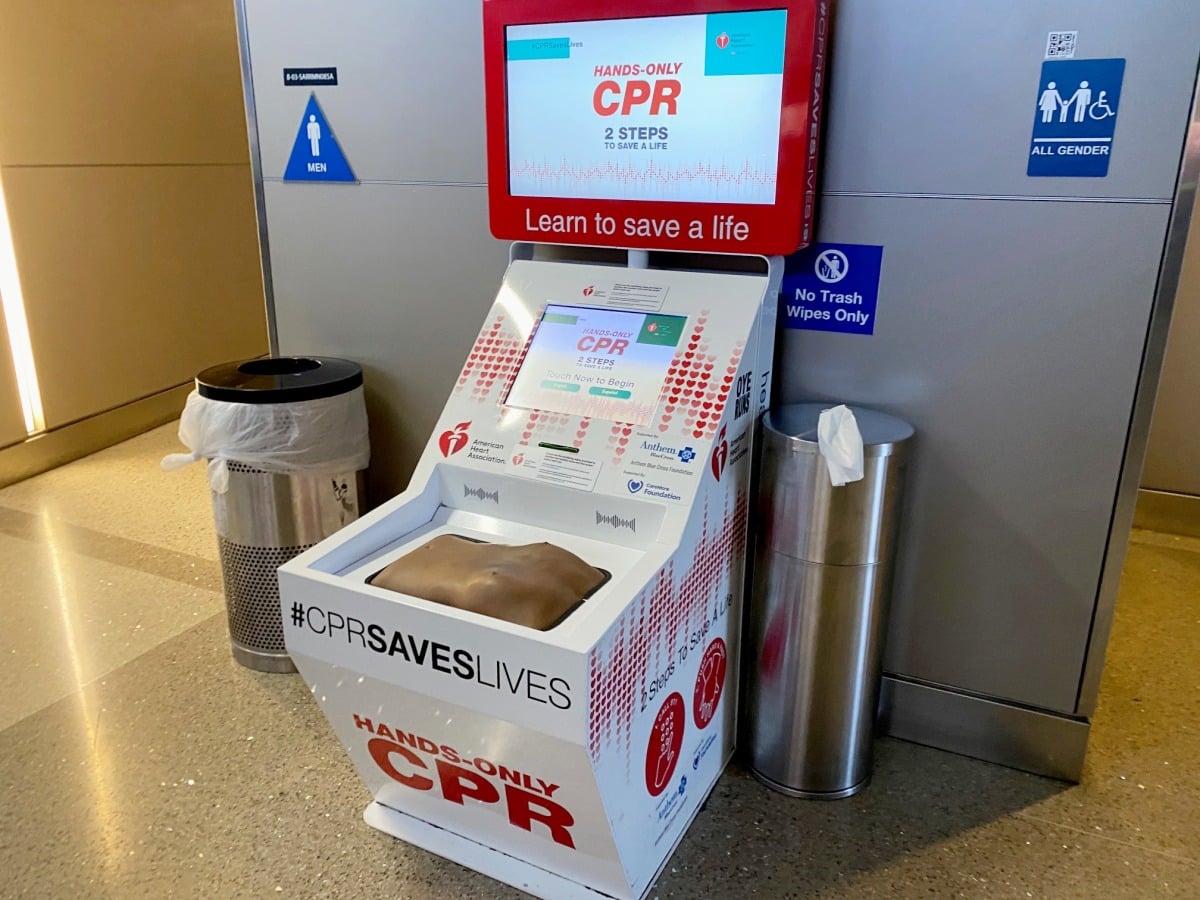I just got off of an American Airlines (AA) flight from San Antonio, Texas. I was there attending the annual IPW conference. The most interesting thing about my flight is that it departed and arrived out of LAX’s (Los Angeles) Tom Bradley International Terminal aka TBIT or Terminal B. RELATED: I Just Flew in JetBlue’s New Mint and it Was …
 The reason why is because AA also uses this particular 737-800 aircraft to fly to/from Puerto Vallarta, Mexico. Usually, American’s flights go out of Terminal 4 or 5 but I think they moved some flights over due to construction in T4.
The reason why is because AA also uses this particular 737-800 aircraft to fly to/from Puerto Vallarta, Mexico. Usually, American’s flights go out of Terminal 4 or 5 but I think they moved some flights over due to construction in T4.
I’m happy because ever since LAX renovated TBIT, it instantly became my favorite terminal in the country and in my humble opinion, it ranks right up there with some of the great terminals in the world … but that’s another story.
But one thing is for sure: TBIT just got even better as I noticed what looked like an interactive arcade game on my way towards the exit. But this kiosk is anything but a game. It’s a hands-on, life-saving tool.
I remembered writing about it when it first came out in 2018 but I had never seen it before since it wasn’t in any of the airports I frequented but I’m happy to report that they’ve since expanded to new airport terminals, including LAX’s TBIT.
It’s all possible thanks to a partnership between the Anthem Foundation and the American Heart Association (AHA). According to their website, “Travelers can now learn Hands-Only CPR in just a few minutes at [airport kiosks] that provide quick lessons and practice using a video touch-screen and a CPR mannequin.”
According to Stuck at the Airport, “each kiosk has a touch screen with a short video that provides an overview of Hands-Only CPR, followed by a practice session and a 30-second test. With the help of a practice mannequin, or a rubber torso, the kiosk gives feedback about the depth and rate of compressions, as well as proper hand placement – which are the key factors that influence the effectiveness of CPR. Instructions are offered in English or Spanish and include closed captioning.”
There are now a total of 37 kiosks, which can be found throughout the U.S. with 16 of those in the following airports:
- Atlanta (ATL)
- Baltimore (BWI)
- Chicago O’Hare (ORD)
- Cincinnati/Northern Kentucky (CVG)
- Cleveland (CLE)
- Columbus (CMH)
- Dallas-Fort Worth (DFW)
- Dayton, Ohio (DAY)
- Houston (IAH)
- Indianapolis (IND)
- Los Angeles (LAX)
- Las Vegas (LAS)
- Oakland (OAK)
- Orange County, CA (SNA)
- Orlando (MCO)
- Seattle (SEA)
I wasn’t in a mad dash like I usually am so I stopped and watched the two-minute instructional video. I also watched a moving testimony from a young man who said he was stuck by lightning walking out to his car and was saved by his friend who just happened to take the time to learn CPR by using one of these machines in an airport.
I figured I could spend a few minutes brushing up on my skills, too. After all, each week, I get a reminder email that I set up to teach me CPR for kids, if God forbid one of mine chokes on something. It seems like I learn something each week and I’m still not 100% confident I will be ready. So I decided to give this machine a try even though it’s not for CPR on kids. It’s for teens and adults.
It’s a little awkward at first because everyone is walking by and people are shy to try it out as the video draws attention … even more so when it’s time to practice your skills on the mannequin’s torso as the pumping makes a good amount of noise.
I could tell a small crowd was starting to gather around me as I was pushing hard to the Bee Gees song Stayin’ Alive that’s playing. The reason that song is played is not just because of the obvious life-saving reference in the title but also because the beat of Stayin’ Alive is similar to what one would need to maintain the ideal rhythm of 100-120 compressions per minute.
The machine said I had the right rhythm but I wasn’t pushing hard enough, which I found surprising. I’m sorry to say I failed the test but I didn’t lose as I know it got other people interested. One female traveler said to me, “Wow! Now this is interesting.” It sure is and I look forward to trying it again next time I’m flying through TBIT. FYI: It’s next to gate 150 and here’s the link to all the precise locations of the other 36 machines.
BTW: According to the AHA, more than 350,000 heart attacks happen outside of a hospital, and about 20% happen in public areas like airports.
RELATED:
- Here’s How to Perform CPR
- Research Neighborhood Safety Scores Before You Travel
- Drowning Prevention & Water Safety from the USSSA
Want more travel news, tips and deals? Sign up to Johnny Jet’s free newsletter and check out these popular posts: The Travel Gadget Flight Attendants Never Leave Home Without and 12 Ways to Save Money on Baggage Fees. Follow Johnny Jet on MSN, Facebook, Instagram, Pinterest, and YouTube for all of my travel posts.







